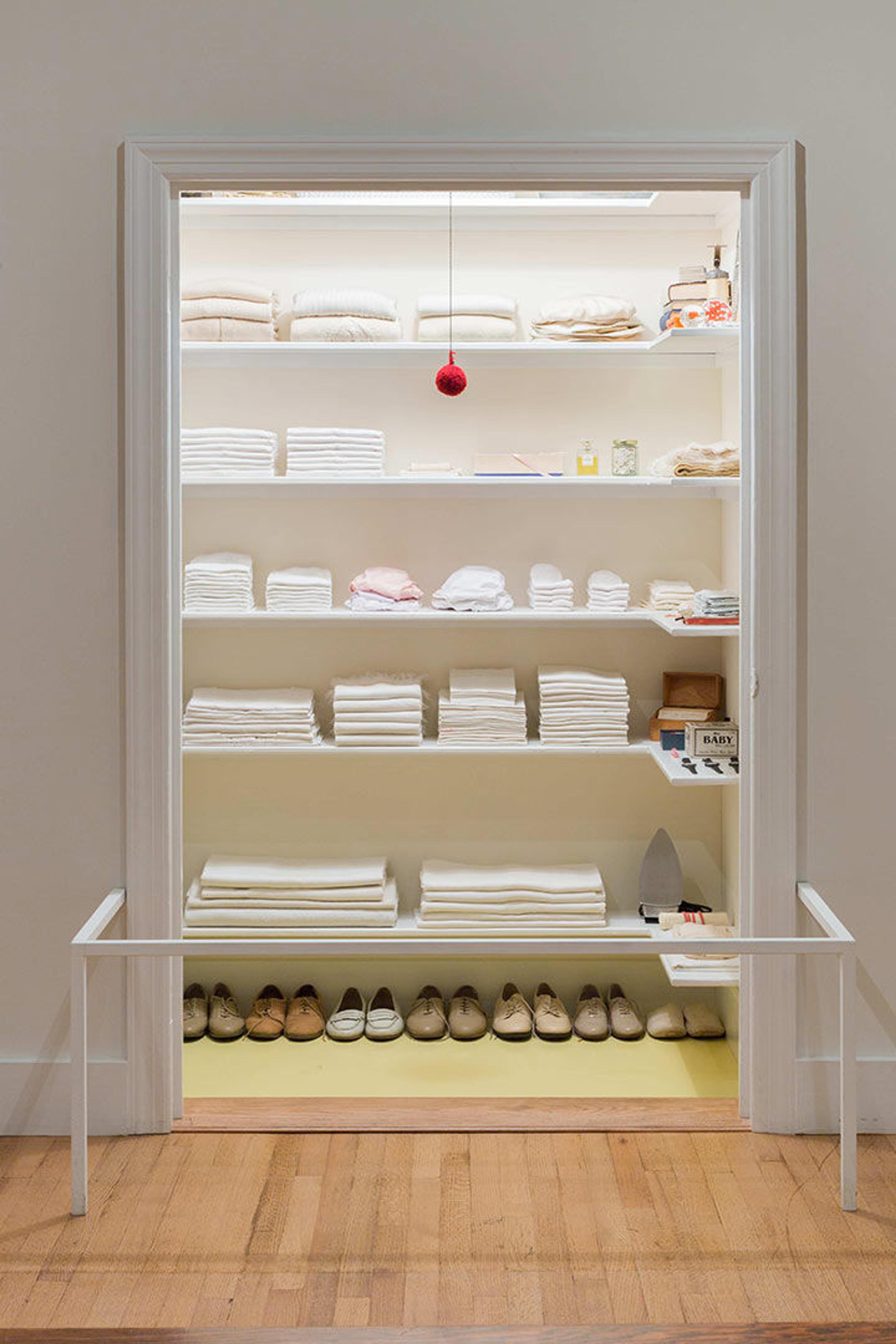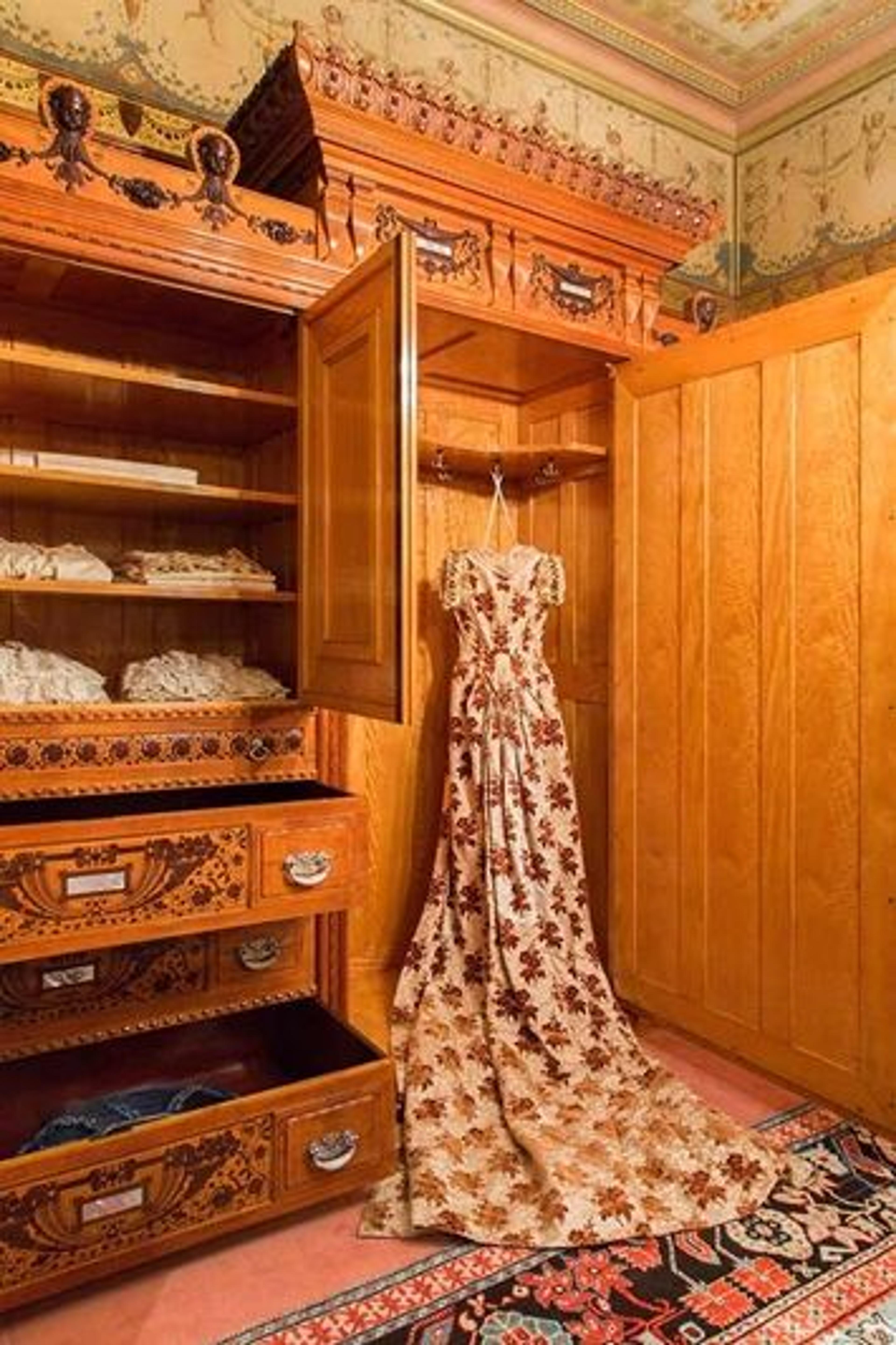
Left: Sara Berman in Rome, 1994. Photo by Maira Kalman. Right: Maira Kalman (American, born Tel Aviv) and Alex Kalman (American, born New York). Items from Sara Berman's Closet, 2015. Textiles, leather, paper, glass, metal, plastic. Collection of the artists. Photo by Katherine Finkelstein
«How do you define yourself? Is it the music you listen to? Or the way you do your hair? What about the clothes you wear? For Sara Berman, it was the minimalism of her wardrobe. After 38 years of marriage and living life in a "well-to-do" upper-middle-class home, Sara's transition to a minimalist studio apartment, and her decision to wear only white for the rest of her life, were a way for her to reinvent who she was and who she wanted to be. For the first time in her life, she had her own space and a new sense of freedom. Her daughter, Maira Kalman, and her grandson, Alex Kalman, see her closet as representing the "tenderness of creating your own life."»
It's normal for us to want to figure out who we really are and who we want to be. At The Met, I'm an intern for Medill Harvey, a curator in The American Wing who specializes in the American decorative arts. My internship with her has helped me develop a new appreciation for possessions and rooms as a whole, as well as what makes a room so unique—something I never would've thought I could be so interested in. When Medill first introduced me to Sara Berman's Closet, an exhibition that's on view through September 5, I realized there is no limit to how people express themselves. As a teenager who is in that weird transition from relying on a parent for everything to slowly becoming an adult with real responsibilities, I know what it feels like to want to rediscover and reinvent yourself to be the best possible person you can be and to find freedom from a society that's engulfed in the idea that people have to look a certain way to "fit in."

Maira Kalman (American, b. 1949) and Alex Kalman (American, b. 1985). Installation view of Sara Berman's Closet, 2015. Collection of the artists. On view in gallery 743
Sara's closet contains not only the clothes she wore, which bear various tints of cream, ivory, and ecru while still reading as white, but also the objects that meant the most to her. These objects include an iron, an Israeli-made potato grinder, a box of recipes, Chanel perfume, a nude-pink nail polish, her sunglasses, and three watches, each set to the time zones where her children lived. When you really start to think about it, your closet/wardrobe makes a statement about who you are based on the things you keep there. Although her closet is very minimalist, the items in it (especially the recipes and potato grinder) strongly reflect Sara's upbringing in Palestine where, according to her daughter, "the women of her family worked like beasts from morning to night. It was that sense of dedicating yourself to a life of taking care of the people you love by baking and sewing and cleaning." To me, it feels as though her closet represents the pride she took in her upbringing, her parenthood, and her ability to be an independent woman.
George A. Schastey & Co. (1873–97). Worsham-Rockefeller Dressing Room, 1881–82, New York. The Metropolitan Museum of Art, New York, Gift of the Museum of the City of New York, 2008 (2009.226.1–19a–f). On view in gallery 742
What's really interesting is that right across from the gallery where Sara's closet is installed is the dressing room of Arabella Worsham, who, exactly 100 years before, commissioned George Schastey (a successful New York cabinetmaker and decorator) to design her home to her specifications. Like Sara Berman's closet, the dressing room gives us a sense of Arabella's style and who she was.

Left: George A. Schastey & Co. (1873–97). Worsham-Rockefeller Dressing Room, 1881–82, New York. The Metropolitan Museum of Art, New York, Gift of the Museum of the City of New York, 2008 (2009.226.1–19a–f)
In contrast to Sara Berman's closet, Arabella's jewel box of a dressing room is highly ornate, with intricate woodwork and furniture—including a delicate dressing table, a dressing glass, chairs, and a built-in wardrobe—and elegant clothing. The stylized ornamentation and carved flourishes in the Renaissance style further contrast these two women's sensibilities. In particular, I like the idea that the control both women had over their own surroundings reflected and impacted the way they adorned themselves.
When I learned that Ms. Kalman (Sara Berman's daughter) had assisted on a show about the comfort of objects at the Cooper Hewitt, Smithsonian Design Museum, it got me thinking that maybe Sara’s decision to wear white in the way she did provided her with a sense of comfort. Some may see her decision as a way of stepping out of her comfort zone to redefine herself, but I see it as Sara Berman finally finding contentment. In a way, I aspire to be like Sara Berman in the sense that one day I want to truly find comfort in something that makes my life meaningful, even if it's the smallest little thing.
Related Links
Sara Berman's Closet, on view at The Met Fifth Avenue through September 5, 2017
Read another blog post about Arabella Worsham and her famous dressing room.
See and hear artists Maira Kalman and Alex Kalman speak about the life and style of Sara Berman in a MetMedia video interview.
